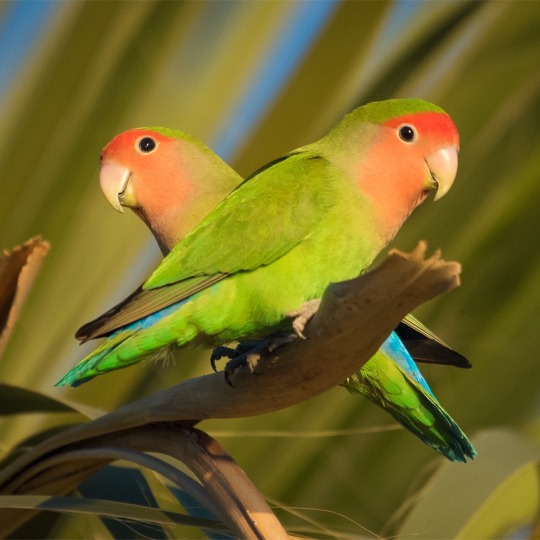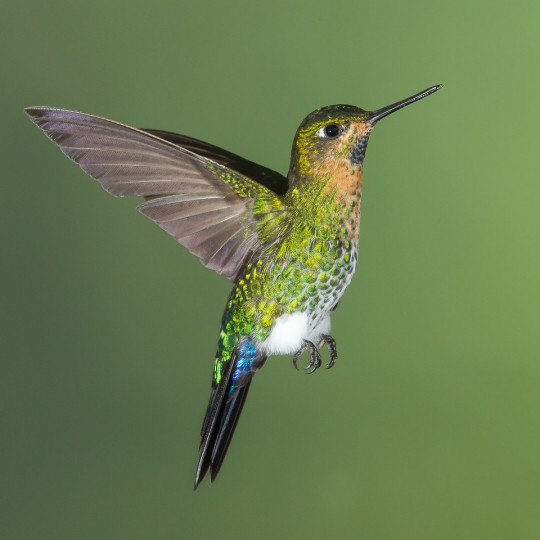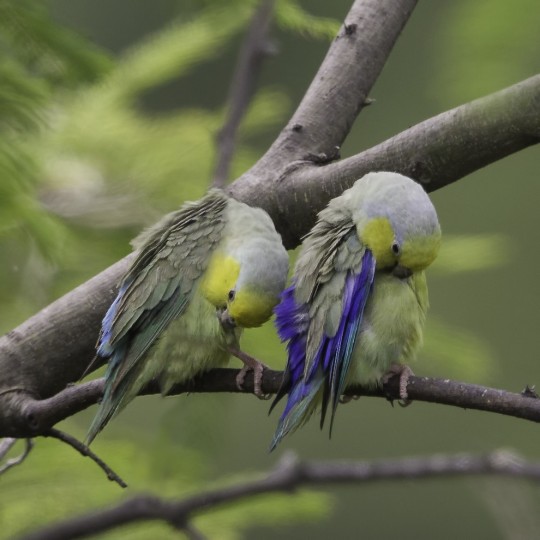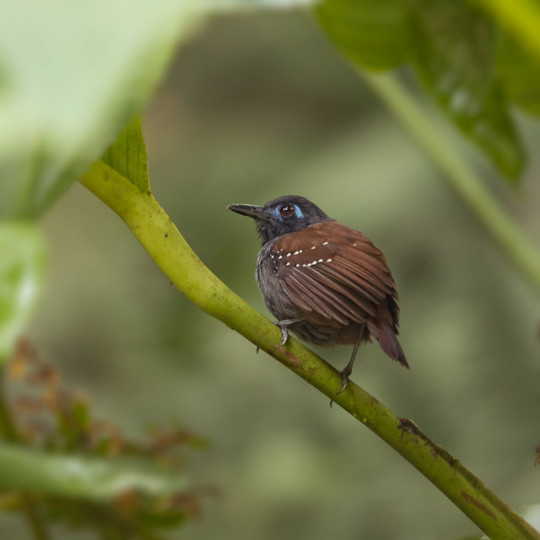#peter hawrylyshyn
Photo

Long-wattled Umbrellabird (Cephalopterus penduliger)
© peter hawrylyshyn
#long-wattled umbrellabird#cephalopterus penduliger#cotingidae#passeriformes#peter hawrylyshyn#birds
145 notes
·
View notes
Photo

Long-wattled Umbrellabird (Cephalopterus penduliger)
© peter hawrylyshyn
#long-wattled umbrellabird#cephalopterus penduliger#cotingidae#passeriformes#peter hawrylyshyn#birds
69 notes
·
View notes
Photo

Long-wattled Umbrellabird (Cephalopterus penduliger)
© peter hawrylyshyn
#long-wattled umbrellabird#cephalopterus penduliger#cotingidae#passeriformes#peter hawrylyshyn#birds
7 notes
·
View notes
Text

[2685/11080] Coppery metaltail - Metallura theresiae
Order: Apodiformes (swifts and hummingbirds)
Family: Trochilidae (hummingbirds)
Subfamily: Lesbiinae
Photo credit: Peter Hawrylyshyn via Macaulay Library
369 notes
·
View notes
Text


Remember to read about the contestants before voting!
Rosy Faced Lovebird
Native to the continent of Africa, the Rosy Faced Lovebird has since expanded, in large thanks to people keeping them as pets. Their name does in fact come from their strong bonding with one another, and how they will sleep side by side with their faces towards one another. The females are also known to tear off long pieces of raw material and put them in their back feathers and fly with them. They will often use this for nesting materials. They are very sociable and will gather in large flocks! Learn More!
Roseate Spoonbill
Once again a bird that was almost driven to extinction, the roseate spoonbill shares a characteristic with the flamingo, in which their pigment comes from what they eat. They use their oddly shaped beak to sift through mud, and eat crustaceans as well as mollusks and plant material, and much more. They have expanded their territories in recent years, possibly because of the lack of fresh water in their normal nesting habitat. Learn More!
(Rosy Faced Lovebird photo by Adam Jackson)
(Roseate Spoonbill photo by Peter Hawrylyshyn)
115 notes
·
View notes
Text
Uncharismatic Fact of the Day
Somebody get some Rogane for the roseate spoonbills! As members of both sexes get older, they begin to lose feathers on the tops of their heads in the same way male humans begin to bald. This is a perfectly natural part of the aging process, and for Platalea ajaja can indicate sexual maturity and health.

(Image: An adult Roseate spoonbill (Platalea ajaja) flaunting his bald spot by Peter Hawrylyshyn)
If you like what I do, consider leaving a tip or buying me a ko-fi!
#roseate spoonbill#Pelecaniformes#Threskiornithidae#spoonbills#water birds#birds#uncharismatic facts
115 notes
·
View notes
Text
Round 1, Poll 57
Helmeted Hornbill vs Hairy Hermit Hummingbird


sources under cut
Helmeted Hornbill Propaganda
"I submitted it to the weird bird tournament and it didn’t get in but the great hornbill did! if more people knew about the fact there was an even weirder hornbill than that one it would’ve gotten in for sure"
Its primary habitat is evergreen forest, especially the foothills, but they will used some selectively logged forests. These birds are non-migratory and territorial, and will form small groups of around 10-14 non-breeding and immature birds who search together for food.
Hairy Hermit Hummingbird Propaganda
"All the other hummingbirds are called really sparkly sound names like ‘wood nymph’ or ‘emerald’ or ‘topaz’ or ‘comet tailed’ or so and then there’s the hairy hermit. It’s not like other girls /joking but also"
Also known as: Rufous-breasted Hermit; a widespread species of hummingbird, they are common in much of their range, from Southern Brazil to the Northern edge of Panama.
Hermit hummingbirds are typically associated with heliconia flowers, using their long, decurved bill to easily access the nectar. This species in particular also uses heliconias as a nesting platform.
Image Sources: Hornbill (Ayuwat Jearwattanakanok); Hummingbird (Peter Hawrylyshyn)
#hipster bird main bracket#poll#polls#bracket: FOUR b#round 1#helmeted hornbill#hairy hermit hummingbird#rufous breasted hermit
23 notes
·
View notes
Text
Animal of the Day!
Sociable Weaver (Philetairus socius)

(Photo by Peter Hawrylyshyn)
Conservation Status- Least Concern
Habitat- Southern Africa
Size (Weight/Length)- 30 g; 14 cm
Diet- Insects; Seeds
Cool Facts- Living in the arid environment of Africa, tiny birds struggle to find enough water and shade to sustain themselves. Luckily, sociable weavers have come up with an ingenious solution. Living in large flocks, they build a mass, communal nest that is nearly twice as cool at the outside environment. This cool environment is host to all sorts of other birds, such as pygmy falcons and rose-faced lovebirds, to snakes like the cape cobra that live peacefully with the birds in exchange for a home. Individual entrances fill the space so parents can raise their offspring away from the clutter of the rest of the flock. Only breeding during rainy seasons, sociable weavers are often chick-free for the majority of their lives.
Rating- 11/10 (Affordable housing? In this economy?)
Animtober- Nest (Biggest nests known to birdkind.)
#Animal of the day#Animals#Birds#Sunday#October 9#Sociable weaver#biology#science#conservation#the more you know#Animtober#Inktober#Nest
50 notes
·
View notes
Photo

Glowing Puffleg (Eriocnemis vestita)
© peter hawrylyshyn
28 notes
·
View notes
Photo

Bronze-tailed Thornbill (Chalcostigma heteropogon)
© Peter Hawrylyshyn
#bronze-tailed thornbill#chalcostigma heteropogon#trochilidae#caprimulgiformes#birds#peter hawrylyshyn
22 notes
·
View notes
Photo

Monk Parakeet (Myiopsitta monachus)
© Peter Hawrylyshyn
12 notes
·
View notes
Photo

Yellow-faced Parrotlet (Forpus xanthops)
© Peter Hawrylyshyn
14 notes
·
View notes
Photo

Poliocrania exsul by peter hawrylyshyn
#bird#birds#animal#animals#biology#nature#wildlife#fauna#Passeriformes#Thamnophilidae#Poliocrania#Poliocrania exsul
95 notes
·
View notes
Text

[1463/10977] Blue-fronted Lancebill - Doryfera johannae
Order: Apodiformes
Family: Trochilidae
Subfamily: Polytminae
Photo credit: Peter Hawrylyshyn via Macaulay Library
168 notes
·
View notes
Text

[1535/10977] Blue-winged Warbler - Vermivora cyanoptera
Order: Passeriformes
Suborder: Passeri
Superfamily: Emberizoidea
Family: Parulidae (new world warblers)
Photo credit: Peter Hawrylyshyn via Macaulay Library
#birds#Blue-winged Warbler#Passeriformes#Passeri#Emberizoidea#Parulidae#Vermivora#birds a to z#undescribed
131 notes
·
View notes
Text

[1117/10977] Black-faced Babbler - Turdoides melanops
Order: Passeriformes
Suborder: Passeri
Superfamily: Sylvioidea
Family: Leiothrichidae (laughingthrushes)
Photo credit: Peter Hawrylyshyn via Macaulay Library
#birds#Black-faced Babbler#Passeriformes#Passeri#Sylvioidea#Leiothrichidae#Turdoides#birds a to z#undescribed
165 notes
·
View notes